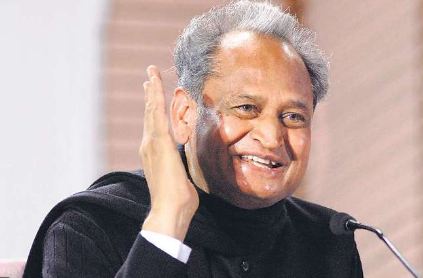In the recently-presented state budget, Rajasthan Chief Minister Ashok Gehlot announced that Rajasthan will revert to the old system to provide guaranteed pensions to state government employees.
The decision to roll back the new pension system sets a bad precedent for other states. Similar promises are being made by other parties during the ongoing state elections. The move to revert to the old pension system is anti-reform and a retrograde measure.
The decision to move away from the defined benefit old pension scheme for civil servants was based on the fact that the old pension system was inherently inequitable. It provided disproportionate benefits to the civil servants while the bulk of the population didn’t get any benefits of old age social security.
How Rajasthan move upends NPS advantages
Civil servants are a tiny fraction of the Indian population. However, by the early 2000s, the net present value of the pension promises to civil servants (and pensioners) added up to about 60 per cent of India’s GDP.
Rajiv Mehrishi and Renuka Sane point out that Rajasthan spends Rs 23,000 crore on pensions and Rs 60,293 crore on salaries and wages. This constitutes 56 per cent of its own tax and non-tax revenues. Thus, 10 lakh families constituting about 6 per cent of the 1.6 crore families preempt 56 per cent of the state’s revenues.
As a culmination of the growing concerns around unsustainable pension liabilities, the government set up an expert committee named ‘Project Old Age and Income Security (OASIS)’, led by Surendra Dave, to examine policy questions related to old age income security in India.
This brought together experts and academics, who designed the New Pension System (NPS). The panel submitted its report to the Ministry of Social Justice and Empowerment in February 1999.
The NPS was built on the principles of thrift and self help, instead of the vision of being paid by the state for life. All new recruits from 1 January 2004 onward were placed into the NPS. Recently, the contribution by governments — both central and state — has been enhanced to 14 per cent to enhance the corpus.
By building the NPS for civil servants and making them the early adopters, foundations were laid for a system where the bureaucracy has the incentives to make it work well and lay its foundations. This system could then be used by the larger population.
With effect from 1 May 2009, NPS has been provided for all citizens of the country including the unorganised sector workers on a voluntary basis. As on 31 January 2022, the total asset under management of the NPS trust is Rs 6.85 lakh crore. This includes central government employees, state government employees, corporate sector and the unorganised sector as subscribers to the NPS trust.
The NPS is a defined contribution system, where contributions by the employee are matched by equal contribution by the government or the employer. Each employee holds a personal account maintained in a central database, regulated by the Pension Fund Regulatory and Development Authority (PFRDA).
Several competing pension fund managers offer three investment options: with different asset class allocations and volatility characteristics. The design of the scheme ensures transparency as the pension fund manager gives out easily understood information about past performance, so that the individual is able to make informed choices about which scheme to choose.
Pension schemes before 2004
Prior to 2004, the existing pension schemes were limited in their coverage. Broadly there were two kinds of pension schemes: First, there was a pension scheme for civil servants and employees of autonomous bodies such as universities, which was fully funded by the government. Under the scheme, employees on their retirement used to get usually 50 per cent of their last drawn salary, as pension with dearness relief linked to inflation.
Second, there is the pension scheme by the Employees Provident Fund Organisation (EPFO), which is mandatory for establishments covered by the EPFO (roughly speaking, companies with more than 20 workers).
Employee Pension Scheme (EPS) works only if assured returns are replaced by market determined rates of return. However since there are strict norms on governing portfolio management, higher returns cannot be obtained by better fund management.
The introduction of the NPS had solved two problems. The first was the explosive fiscal burden of pensions. The reversion to the old pension system will have fiscal implications as the government would either have to cut on investments or borrow more to pay for a higher pension bill under the old pension system.
The second objective addressed by NPS was to move away from concentrating the government’s pension obligations from a thin slice of the population to the wider population and to the poor and unorganised workers.
By going back to giving a defined benefit pension to civil servants, the Rajasthan government will reduce the chances of creation of a nationwide pension system for all workers. The proposal will reintroduce inequity into old age benefits of the Indian population.
Ila Patnaik is an economist and a professor at National Institute of Public Finance and Policy.
Radhika Pandey is a consultant at NIPFP.
Views are personal.





































